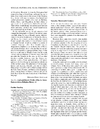I also wonder how big the core awdal region used to be . If you look at the maps before the number fo gobols increases awdal was a much larger region.
Sanaag is another region that I think is aka confusing because although it doesn't have any large historical urban centers or sultanates associated with it. Its arguably from the point of view of somali oral traditions the most important gobol since most of the somali clan ancestors are buried there. And there are other associations like with arawello and just in general it seems to be considered an ancient and sacred place.
Sanaag is another region that I think is aka confusing because although it doesn't have any large historical urban centers or sultanates associated with it. Its arguably from the point of view of somali oral traditions the most important gobol since most of the somali clan ancestors are buried there. And there are other associations like with arawello and just in general it seems to be considered an ancient and sacred place.


